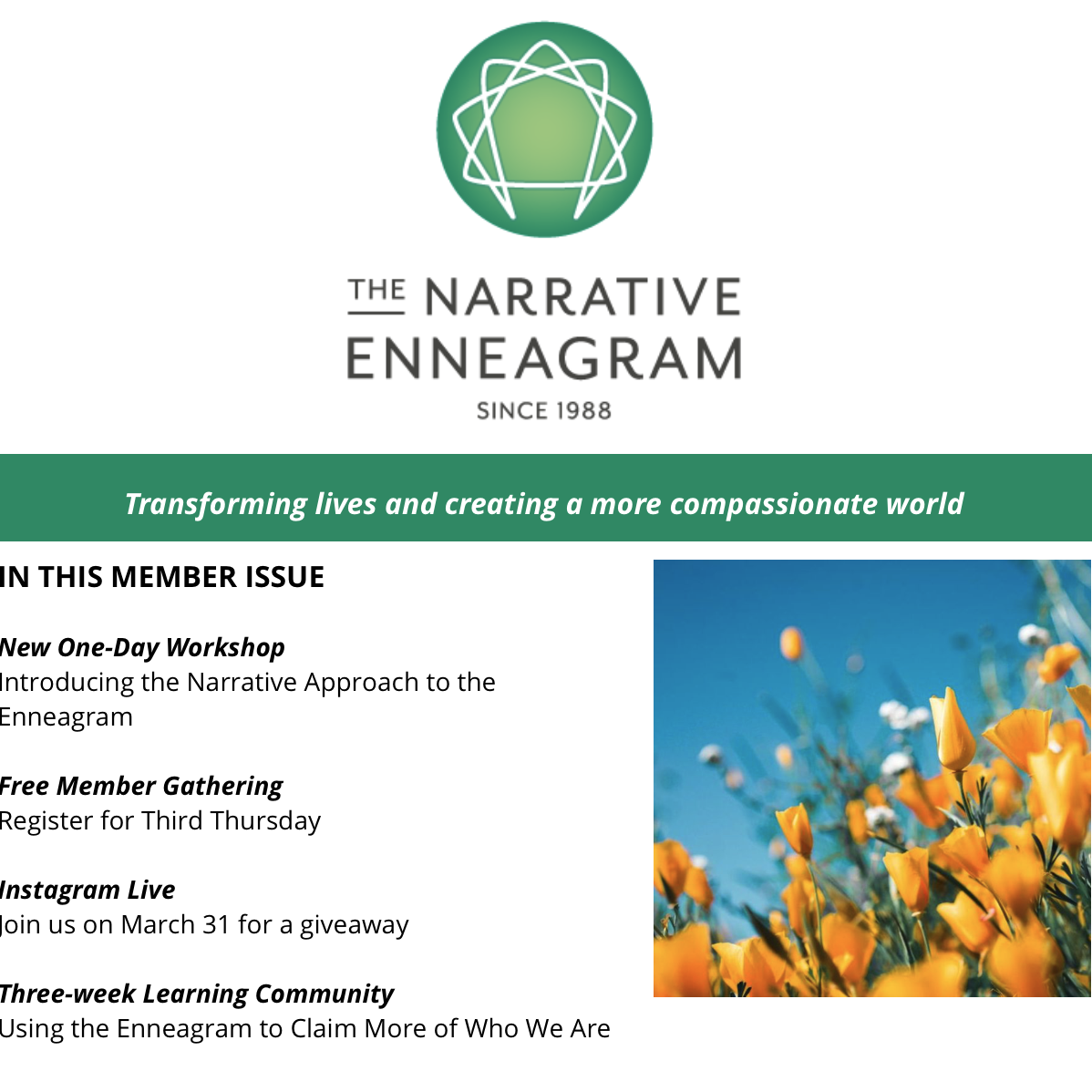My life changed three years ago when I was shocked to stumble upon a description of my egoic structure, the one I’d thought belonged to me alone. I should mention that I identify as a Type Four. I decided to pursue a career in therapy in order to use this phenomenal tool to help others understand themselves in the same way I have been helped.
Before entering a Master of Social Work program this fall, I embarked on the Enneagram Narrative Professional Certification Track to parallel my academic studies with a passage into the deep work I hope to be doing with clients. I was drawn to Enneagram Studies in the Narrative Tradition because of its holistic focus on all dimensions involved in transformation: the somatic, the psychological and the spiritual.
I attended the three courses that constitute the Enneagram Narrative Core Program: Enneagram Intensive 2.0, Instincts and Subtypes, and Deepening Spiritual Awareness. I appreciated the Core Faculty’s style of exploring the Enneagram. They taught fascinating information, but did not limit the learning experience to the heady stuff.
The real work of transformation involves presence, spirituality and the body, which are all intertwined. Through breath work and somatic practices, we worked on staying present, which is really the only way transformation can happen. We learned that we are not fighting against our type structure, but instead can work with it through awareness, cultivating the capacity to step back from reactivity and see with the Inner Observer.
Personally, the Core Program set a self-discovery process into motion that has continued to unfold since I took the courses in August. I have grown in awareness of my reactivity. I am quicker to recognize signs in my body that a reaction is emerging, and I am equipped with strategies for addressing the reaction.
Beyond what I took away personally, there is so much I will be able to use professionally as a therapist. I became familiar with the process of developing the Inner Observer, which I can use to help clients engage in self-observation. As they observe their patterns, they can gain some distance from them and see them more objectively. They can start becoming increasingly identified with the consciousness that witnesses the patterns.
I acquired some fantastic methods of somatic work, including exercises to complete the fight, flight and freeze responses, and practices to inhabit the head, heart and gut centers. Importantly, I learned somatic exercises that work in conjunction with the Inner Observer. If a client experiences the reactivity of type, I can ask her, “Where are you feeling this in your body?” and then encourage her to shift her life force (or “virs” in Latin) toward the spot that needs attention.
During a closing circle for the last of the three courses, the phrase that came to me to describe what I had gleaned was, “Presence trumps drama.” I am learning, slowly but surely, to choose presence and awareness over absorption in the patterns and habits of my egoic structure. And now I’m better equipped to teach my clients to do the same.


Comments
Mary Mersereau-Kempf says
Blessings as you embark on your exciting journey. Your clients will benefit from the personal work you have and are doing.
Courtney McCall says
Thanks so much for your blessings, Mary. I appreciate the kind message.
Alice says
So wonderful to come at therapy not trying to change clients but to let them see how they are and grow in themselves!
Leave a reply